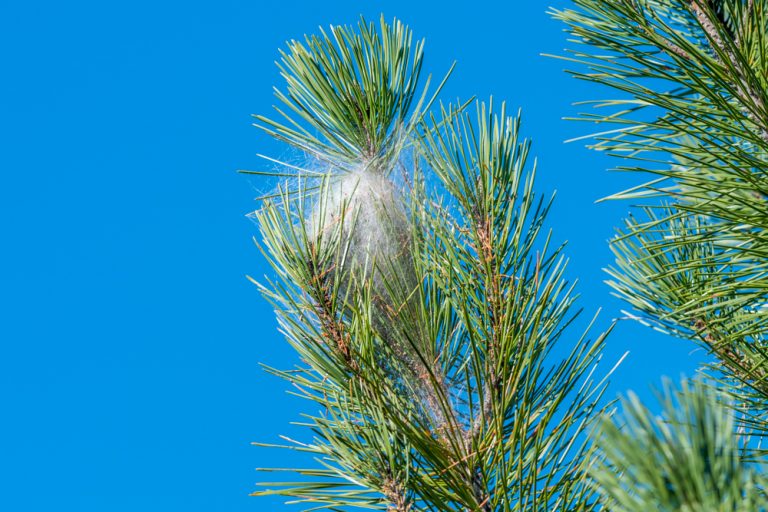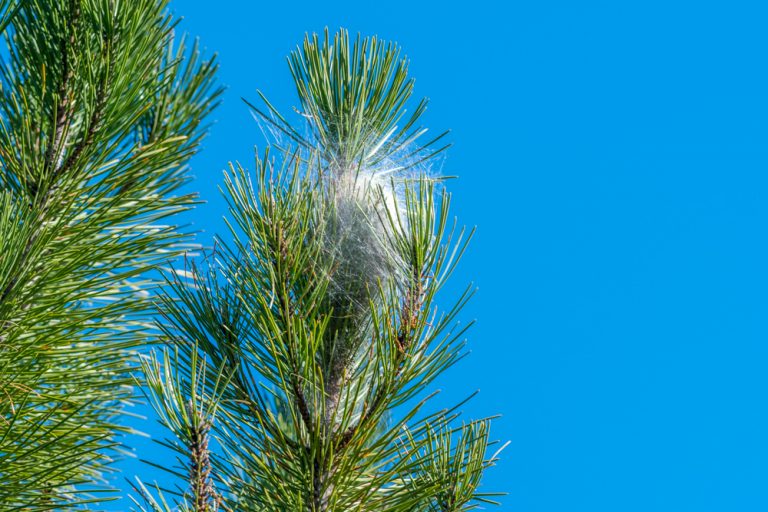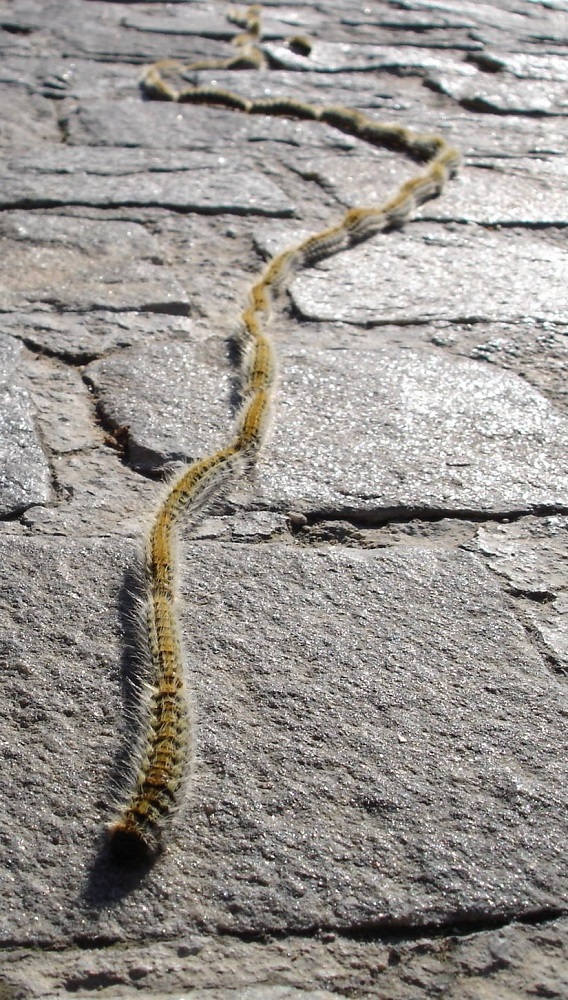The Pine Processionary Caterpillar can be a real issue here in Southern Europe and even more so in the Algarve.
Towards the end of December and into January/February, you may notice silky Spider-Web-like nests appearing in the Pine Trees. They have a hidden danger.

The Processionary Moth, completely harmless, lays its eggs during the summer on the Pine Needles. When the Caterpillars hatch, they eat the Pine Needles during the night and gather in the silky nests during the day. The nests are usually positioned high up the tree pointing towards the sun. During the winter the Caterpillars grow in size until they are ready to make their transformation into Moths.
It’s at this time they are dangerous, particularly to inquisitive animals such as Cats and Dogs. So why are they so dangerous? Read on…..

Depending on the weather and temperature, sometime during spring the Caterpillars make their way out of the nests, down the tree to the ground to find a suitable location to bury themselves and turn into Pupae for their transformation into Moths. Its’s at this time they pose the greatest threat. Luckily, the majority of time this occurs at night, although they can be seen during the day. It is also occasionally known for them to leave the nest far earlier in the year depending on weather. Also severe wind can blow the Caterpillars out of the trees too.
As a method of defence, the Processionary Caterpillar has tiny barbed hairs covering their body which can become irritating to the skin. In some cases humans can develop a nasty reaction. It is also said that during the later stages of the larvae, the hairs can be launched like harpoons if threatened. The Caterpillars get their name from the fact that they make this journey to the ground in a processional line, nose to tail. The line can sometimes be a few meters long looking like a long fury thin snake.

Of course, adult human contact is easily avoided, however, care must be taken with inquisitive children and pets. Cats and Dogs that have curiously sniffed a Caterpillar can suffer horrific injuries and even death. I have read articles of Dogs losing tongues.
If you have a pet that has come into contact, please don’t hesitate and rush them to your vet, symptoms usually include excessive saliva and drooling. Likewise, if any human, adult or child has ingested the hairs or has an allergic skin or eye condition, seek medical help.
Spotting the nests are easy, if your daily walk goes through Pine Tree areas, look towards the top for the nests (a single tree can have many nests). If you have Pine Trees on your land, you may want to have the nest removed as early as possible and even go as far as removing the Pine Trees themselves. The longer the feeding stage, the more potent the toxins can become. There are many companies that can remove and destroy the nests, it is not recommended to tackle the nest yourself as this may cause the hairs to be airborne.

Of course, being a Wildlife and Nature lover, I hate to purposely kill any species, however, if they are close enough to the house to cause a problem, there is no other option. These Caterpillars might pose a threat, however, they still have an active part to play. Yes, they also attribute to deforestation through the eating of the Pine needles, but some bird species (Cuckoo for example) eat the Caterpillar and the Hoopoe will eat the Pupae from the ground. The Moth is also predated by Bats.
If you see a nest, don’t be alarmed and run away, they are not going to chase you, just be careful around them. If you visit the Pine Forests, it’s actually a great sight to see all the nests, but again, don’t approach them and keep kids and dogs away from them.
Please feel free to share this blog post to spread the awareness.
If you have an interest in Wildlife and Nature, then please subscribe to my mailing list.
(This post is a repost from February 2018 but still very valid)